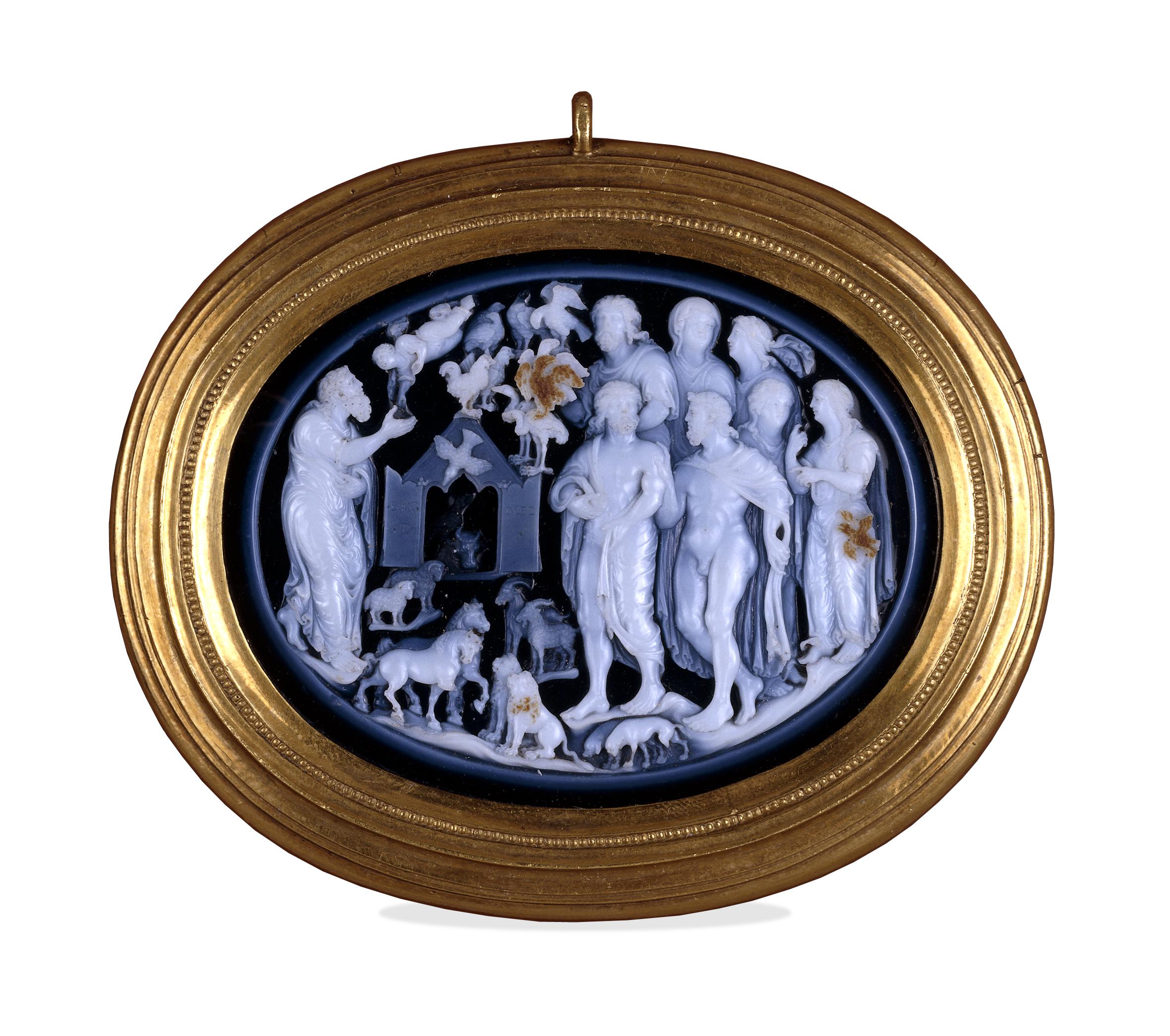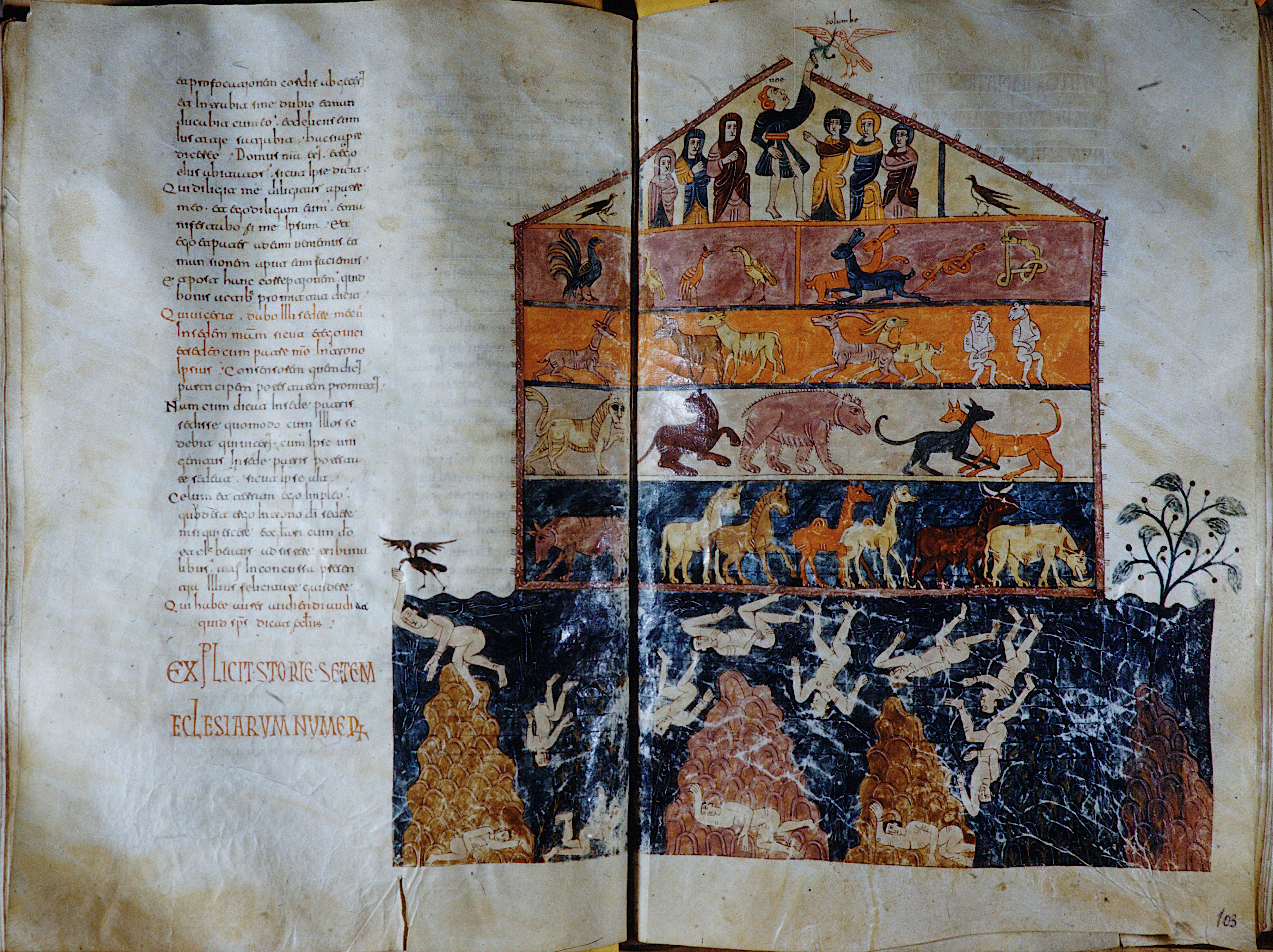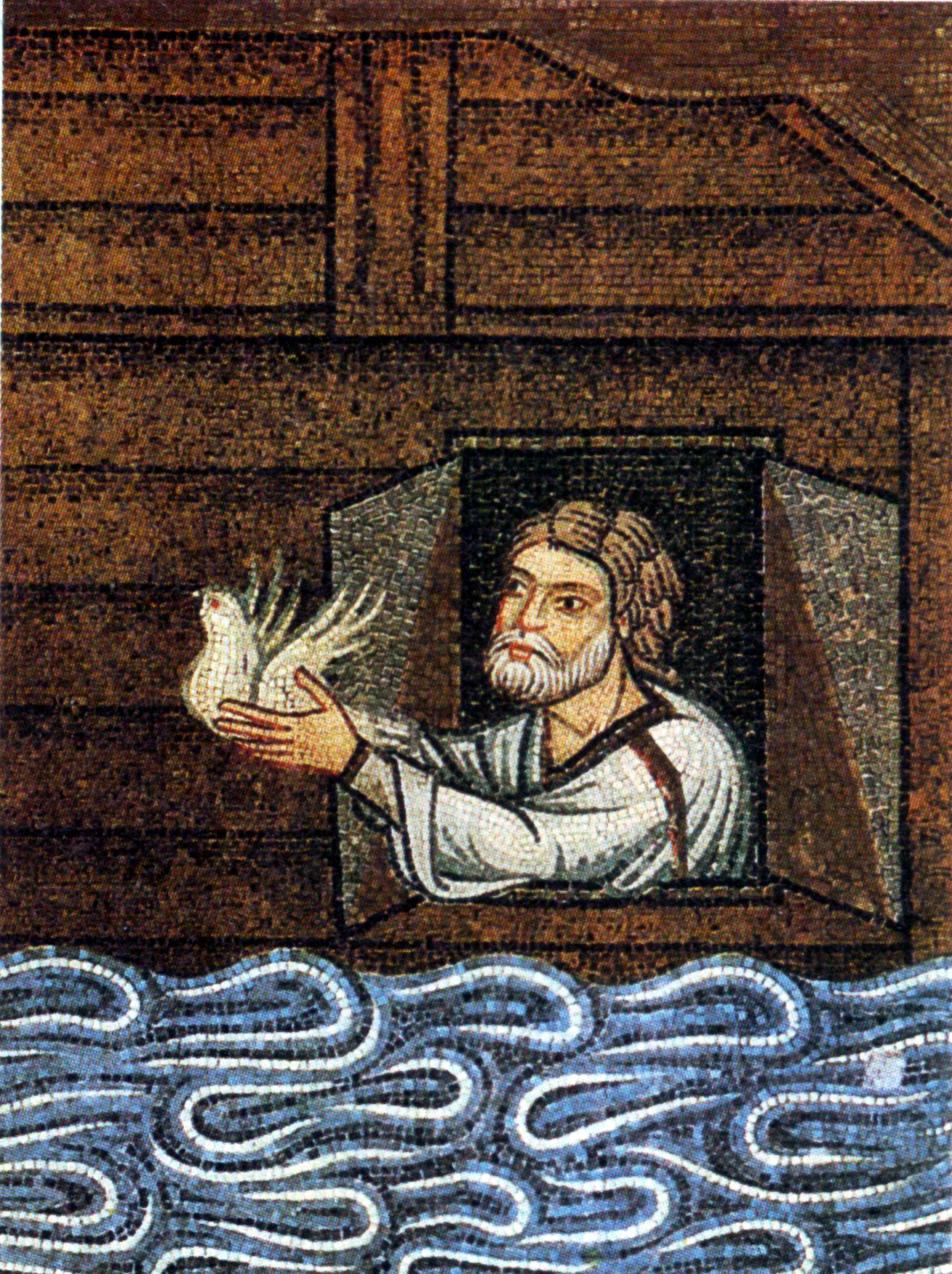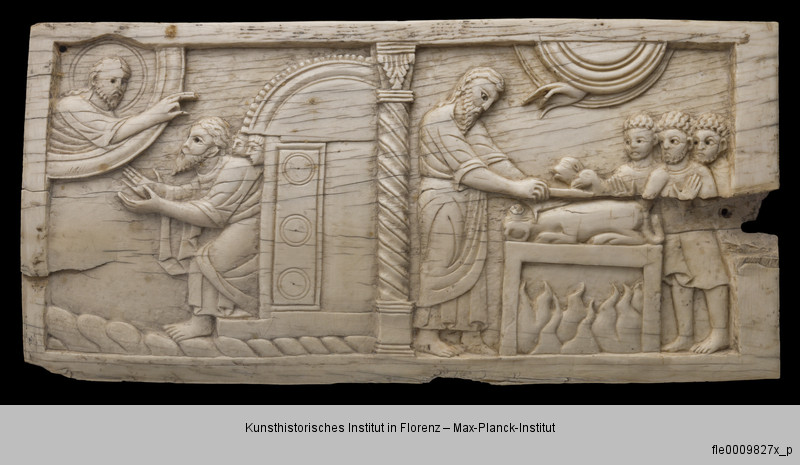Noah#
(no’uh) HEBREW: NOAH
possibly “to rest”

Fig. 5 Noah’s family entering the ark; a 13th-century carved cameo. (Image courtesy of © The Trustees of the British Museum. Shared under a Creative Commons Attribution-NonCommercial-ShareAlike 4.0 International (CC BY-NC-SA 4.0) licence. Accessed on August 25, 2025.)#
Revered along with Daniel and Job as one of ancient Israel’s three righteous men, Noah plays two important roles in history. First, he is virtually the second father of humankind, because all of Adam’s other descendants were destroyed in the great Flood that covered the world more than 1,600 years after creation. In that role, he acts as a link between the fragmentary accounts of humanity’s first generations and the more detailed biographies of Israel’s patriarchs that follow in the book of Genesis. Second, he is the discoverer of viniculture, or the growing of grapes, and the first person known to make wine.

Fig. 6 As humanity drowns in the Flood below, Noah – safely aboard his ark – reaches for the dove’s olive leaf; a tenth-centry manuscript illumination painted by Emeterius (pupil of Magius) and by the nun Ende. (Image courtesy of Wikipedia, Public Domain. Accessed on August 25, 2025.)#

Fig. 7 Noah releasing the dove; a 14th-century mosaic from the cathedral of San Marco in Venice. (Image courtesy of Wikipedia, Public Domain. Accessed on August 25, 2025.)#

Fig. 8 Noah’s sacrifice, a Byzantine ivory carving from the cathedral of San Matteo in Salerno, Italy. (Image courtesy ©Photothek des Kunsthistorischen Instituts in Florenz – Max-Planck-Institut. Permission for private use obtained, refer here for Copyright Information. Accessed on August 25, 2025.)#

Fig. 9 A seventh-century B.C. stone carving of Gilgamesh. (Image courtesy of Wikipedia, Public Domain. Accessed on August 25, 2025.)#
